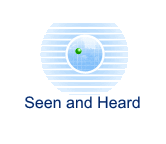|
|
| 
Editorial
Board
North American Editor:
(USA and Canada)
Marc
Bridle
London Editor:
(London UK)
Melanie
Eskenazi
Regional Editor:
(UK regions and Europe)
Bill
Kenny
Webmaster:
Len
Mullenger

|
Seen and Heard Concert Review
Kenneth Hesketh,
Luke Bedford, Alban Berg: Nicholas Hodges (piano),
Clare Booth (soprano), Clio Gould (violin), London Sinfonietta,
Oliver Knussen (conductor), Queen Elizabeth Hall, London,
30.05.2006 (AO)
Kenneth Hesketh’s Detail from the Record
is part of a much larger work in progress, a ballet for
puppets based on Japanese folk tales, to be called The
Record of Ancient Matters (Ko Ji Ki). Without
context, it may be hard to evaluate this 13 minute segment,
covering four different sections. Fortunately, it does
not attempt any self conscious “Japanese”
effects but focuses on the inherent whimsy of tales about
badgers and sprites. It’s direct and uncomplicated.
Situations seem to arise from within the music itself,
which are resolved into colourful tableaux, like dialogues
for double bass and viola, for bass clarinet and double
bassoon. A cheerful line, sometimes carried by clarinet,
sometimes horn, sometimes flute, pushes the work forward.
I’m not sure it works so well as a stand alone,
but it’s a good taster for the eventual ballet,
originally commissioned for Oliver Knussen’s birthday.
Still in his twenties, Luke Bedford has quite a following
and his new work, completed only some months ago, showed
why. Or Voir Tout En Aventure was written as part
of the Sinfonietta’s Blue Touch Paper project funded
by the Calouste Gulbenkian Foundation and PRS Foundation.
What is it about medieval language that so fascinates
composers? Perhaps it is the mixture of familiarity and
alienation, sparking an imaginative response to what Bedford
calls “the sheer strangeness of the words and their
distance from us”. We think we can make out words
and phrases, yet it is a world very different from ours.
It lends itself well to music which is strikingly new,
yet universal in its emotional impact. Indeed, these 14th
century songs are about music, and adapting to changes
”when everything is uncontrolled” (the literal
translation of “Or voir tout en aventure”).
What makes these songs work so well is that the vocal
part is written with a real instinct for the natural resonance
of the human voice. Voice is not a mere component of a
musical whole, for it is “more” than just
sound. Claire Booth showed this beautifully, her rich,
nuanced expressiveness connecting directly to an emotional
depth more complex than the text alone. She seems to embody
the feelings behind the music itself – an abundant
faith in the power of music as communication that goes
beyond restraints of time and place. Bedford stretches
the technical limits but not to an extent that the natural
flow is distorted: but it is Booth’s musical instinct
that colours and warms her singing that makes it sensually
as well as intellectually challenging. The use of accordion
is interesting, for it, too, like the human voice, is
an instrument that uses “lungs” to breathe
life into its sounds. Similarly, the barrel machine creates
rain like sounds from a deep container mainly filled with
air. Needless to say, the winds were superb – flute
and oboe in particular. The orchestration is subtle, interspersed
with shining details on triangle and xylophone. This is
a lovely piece of music, full of character, which I hope
will find its way into the repertoire.
Indeed, Berg’s Chamber Concerto celebrated
the winds: Clio Gould and Nicholas Hodges appeared as
soloists and the rest of the orchestra got to go home
early. Knussen kept the ebb and flow between soloists
and orchestra fairly fluid, and the transits between themes
were less stark. It made for a surprisingly undogmatic
interpretation, bringing some lyrical playing from flute
and clarinet. The performance was interrupted several
times by a problem with the loudspeakers, but Knussen
continued without missing a beat. Later, he was to say,
he decided not to stop because there was a “story”
in the piece unfolding, “……many stories”,
referring to the secret programmes and cryptography behind
the work. Hence, perhaps, the warmth of the reading rather
than a clinical evisceration. Despite the distraction,
the final movement was very well played, Hodges letting
the reverberations of the piano echo, lingering on as
the orchestra joined in, Gould’s violin soaring
above. This was of course in typical Berg fashion, repeated
three times, until the music slowly tapered off. Just
as the evening started with Hesketh’s tribute to
Knusssen on his birthday, it ended with Berg’s tribute
to Schoenberg on his own.
Anne Ozorio
Back to the Top
Back to the Index Page
|
|


